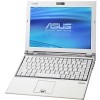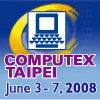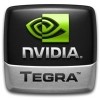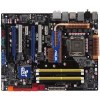- Qualcomm Launches Snapdragon 4 Gen 2 Mobile Platform
- AMD Launches Ryzen PRO 7000 Series Mobile & Desktop Platform
- Intel Launches Sleek Single-Slot Arc Pro A60 Workstation Graphics Card
- NVIDIA Announces Latest Ada Lovelace Additions: GeForce RTX 4060 Ti & RTX 4060
- Maxon Redshift With AMD Radeon GPU Rendering Support Now Available
Content and news by Rob Williams

Rob's Recent Content
ASUS Hosting First RoG Convention Next Month
This summer is gearing up to be a good one for LAN parties and cool conferences (IDF, NVISION, E3), and ASUS is helping to do their part by holding the first Republic of Gamers Convention, taking place from July 18 – 20. The bulk of the convention is a LAN party, where over 700 gamers can meet and greet and kick each others ass. You are free to bring either your desktop PC or your laptop.
If you live in or around the Dallas, TX area, this is one event you shouldn’t consider missing. It’s only $20, and with the amount of projected gamers there, it should turn out to be one heck of an event. Our very own Greg King will be there, who plans to conquer every… single… game he touches.
Now that I’ve set the standard so high, doesn’t it make you want to attend even more? For those who prefer specifics, check out the official FAQ, then register! I know we have a lot of Texan readers, so there will be no excuse if the place isn’t bursting at the seams!
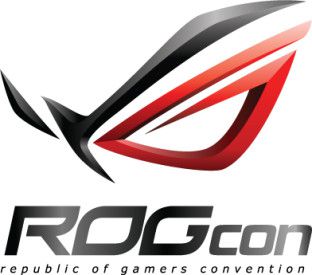 |
Welcome to the Republic Of Gamers Convention, brought to you by ASUS and Intel. ROGCon will be heating up Dallas, Texas this July 18th to 20th by bringing old school LAN party fun to a whole new level. ROGCon will be open to the public and will feature a 24-hour BYOC where 700 gamers can show-off their skills.
Source: RoG Convention
Published on June 19, 2008ASUS U6E 12.1″ Notebook
Mobile computing doesn’t have to be boring – the U6E from ASUS proves that. Within its 12-inch frame is some of the best styling around and very competent hardware, along with a full-sized keyboard, fingerprint reader and four USB ports. Does this small notebook win big time?
Published on June 19, 2008NVIDIA Prepares to Launch 9800 GTX+ Next Month
If there is one thing NVIDIA’s great at, it’s making the competition feel the heat. Even though they are offering the best top-end cards right now, and have been since… hmm, the 6-series, the last thing they want to do is allow AMD to take the lead, in anything. We already know that AMD makes some incredible mid-range cards, and that’s what seems to scare NVIDIA, especially with the upcoming HD 4850 card launch.
From early reports, the HD 4850 out-performs the 9800 GTX from NVIDIA, a card that up until the GTX 280 was the fastest single-GPU card on the planet. But it gets better. The HD 4850 isn’t only faster, but it’s supposed to be priced around the $200 mark (HD 4870 at ~$279). Well, at that price, it would be $70 cheaper on average, over the 9800 GTX. So what’s NVIDIA to do? Drop prices? No, in typical NVIDIA fashion, they’ll again release another card that should not see the light of day.
Ryan at PC Perspective just received a new NVIDIA card, labeled the 9800 GTX+, to benchmark to his hearts content. 9800 GTX+? I’m all for new GPUs when they are warranted, but other than a small die shrink and clock bump, this is essentially a pre-overclocked 9800 GTX. What’s the point? Who knows, but we will once the card is released next month and can have a gander at its pricing.

|
Compared to the current generation GeForce 9800 GTX that runs at 675 MHz core, 1688 MHz shader and 1100 MHz memory clocks, the new 9800 GTX+ is a considerable bump in speed. What makes this all possible? The 9800 GTX+ is the 55nm refresh of G92 – all current 9800-series cards are built on 65nm technology.
Source: PC Perspective
Published on June 19, 2008Tracking Firefox 3 Downloads Instantly
Firefox 3 is here, and a world record attempt is being made. I am not sure what the previous record was, but I think the results so far are going to give the browser a great chance at it. When’s the last time you saw millions band together to download a new browser, anyway? With Firefox 2, perhaps, but since then, the browser’s worldwide usage has only gone up.
The Mozilla folks have put up a cool page that allows you to track their progress so far, and even offers the ability to narrow it down to a specific country. At the time of writing, the worldwide downloads have topped 7,000,000 and still seems to be going up rather fast. So far, the USA have been responsible for over 2.4m, while Germany comes in second, at close to 500K. At this rate, it’s looking like it might just hit 7.75m before the 24hr mark, but my math has always been horrible, so don’t quote my estimation.

|
Please download Firefox 3 by 11:16 a.m. PDT (18:16 UTC) on June 18, 2008. That’s 11:16 a.m. in Mountain View, 2:16 p.m. in Toronto, 3:16 p.m. in Rio de Janeiro, 8:16 p.m. in Paris, Madrid, Berlin, Rome and Warsaw, 10:16 p.m. in Moscow, and June 19, 2008 at 2:16 a.m. in Beijing and 3:16 a.m. in Tokyo.
Source: Spread Firefox
Published on June 18, 2008Toshiba Includes Dedicated Multimedia Chip in Upcoming Qosmio G55
Toshiba’s upcoming Qosmio G55 notebook looks to employ a Quad-Core processor, but it might not be what you think. It’s not from AMD, nor Intel, but rather the result of a collaboration between IBM, Sony and Toshiba. Based on the Cell processor, used in blade servers, this Quad-Core chip operating at 1.5GHz (256KB cache per core) will be used to enhance your multimedia experience.
I’ve emailed Toshiba to get specifics on exactly why this chip will help improve multimedia tasks, but from what I understand, it would be similar to Intel taking their SSE4 instruction set and putting it on a dedicated processor. Whether or not this means you will need specially-equipped software to take advantage of the enhancements, I’m unsure, but hope to have an answer soon.
Still, this idea is interesting, and no doubt intriguing for hardcore multimedia buffs. It seems a little odd to chuck this in a notebook, but the Qosmio G55 is a desktop replacement, so using it as the initial platform to test the waters isn’t a bad idea. Well, that, and not to mention that Toshiba doesn’t deal with desktop systems. I’m still trying to surmise the usefulness of the chip though, because once mobile Quad-Cores hit the mainstream, it might have less of an appeal. But, faster is faster, so it might always have a place somewhere. Adding four extra dedicated cores can’t be a bad thing, right?
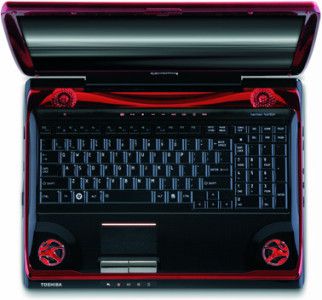
|
The Japanese company says that the processor achieves what many high-end graphics processing units (GPUs) from the likes of Nvidia and AMD now feature: transcoding acceleration. Transcoding, or converting–movies, for example–from one format to another, can be extremely time consuming, sometimes taking hours.
Source: C|Net News
Published on June 18, 2008PSP Gets Major Version Update, But No Major New Features
Sony has announced that a brand-new piece of PSP firmware is en route, set with the 4.0 version number. With such a major version change, you’d assume that major changes are in store, right? Well, from what I can tell, the changes are not worthy of such a version change, but to each their own, I suppose.
What’s new is Google implementation, allowing you to search the web for things straight from the XMB. You know, instead of launching the browser first and heading to Google.com. Quite the time-savings there. Also new is the ability to speed up and slow down video playback when played off of a Memory Stick PRO Duo. Push up and down on the D-Pad to adjust the speed accordingly.
Seriously. That’s what’s new in this major version update.

|
Another new feature delivered through the 4.00 update is the ability to change viewing speed during playback of videos stored on your Memory Stick PRO Duo, so you can speed through or slow down what you’re watching. To do this simply press the up or down directional buttons while playing a video. Enjoy!
Source: Playstation Blog
Published on June 17, 2008NVIDIA Announces GTX 260 and GTX 280 Graphic Cards
If there is one thing NVIDIA does well, it’s the art of taking one GPU core and prolonging it’s lifespan as much as possible. When G80 was first launched, in the form of the 8800 GTX, it offered mind-blowing performance that obliterated the competition. Amazingly, though, it kept that way for quite a while, as the 8800 GTX was the leading GPU all the way up until ATI released their HD 3870 X2.
But then we had the 9-series, and dual-GPU solutions. Of course, it’s not surprising to see a dual-GPU solution out-perform a single GPU, but today, NVIDIA unveils their GTX 280, which accomplishes just that. Compared to the 9800 GX2, it wins in many competitions and follows just inches behind in others. For a single-GPU solution, that’s impressive… as heck.
The downside is that the new GTX 280 is expensive, but that’s to be expected for a brand-new offering that happens to blow away every other single-GPU solution before it. At $649 each, SLI might be out of the question for early adopters, but for the hardcore (and I do mean hardcore) enthusiasts, 3-way SLI is definitely possible.
In the end, the new GPU consumes less power than the 9800 GX2, is quieter, runs just as warm, and happens to perform like the true beast we expected it to. Hard to not like that. We didn’t receive our samples in sufficient time, so we were unable to publish our content today, but stay tuned as it should be delivered before the end of the week.
Now we just need to await ATI’s upcoming offerings to see where everything will fall into place.
 |
Though producing such a massive GPU, does have its drawbacks, which are evident when you consider its die size and when looking at power consumption characteristics, the fact remains NVIDIA has produced the most powerful and fastest graphics card we have ever tested – yet again.
Source: HotHardware
Published on June 16, 2008Computex 2008 – The Roundup
In our last Computex article, I am taking a look at a slew of products from a few different companies that had a lot to offer, such as OCZ, Thermaltake, ECS, Gigabyte, Foxconn and others. Included is a look at numerous motherboards, video cards and even some power supplies.
Published on June 16, 2008ASUS at Computex 2008
One of the dominating companies at Computex was ASUS, and because of the sheer amount of products on display, we’ve decided to dedicate an article to the most interesting ones. Included inside is a look at their new motherboards, audio cards, Eee PC accessories and much more.
Published on June 12, 2008VIA Releases Mini-ITX 2.0, NVIDIA Pleased with PCI-E Support
In case you haven’t noticed, VIA has been in the news a lot over the past few months, and for good reason. While they are still best known for their chipsets, they’ve been branching out into the CPU market, while juggling other ventures as well.
Announced during a press conference was Mini-ITX 2.0, an upgraded spec for the form-factor that was first incorporated about eight years ago… and one that Intel has also just picked up. The new standard has a few decent guidelines, such as requiring HDMI and VGA, 3 audio jacks for 6-channel sound, 1 LAN, 2 S-ATA and 1 P-ATA and also a PCI-Express slot.
Between the new and old, the size of the board itself remains identical. VIA of course had a board on display, using their Nano CPU, but anyone (namely AMD or Intel) is free to license the design.
 VIA’s Mini-ITX 2.0 and NVIDIA Support |
That announcement was of course significant news, but even moreso was the clear effort between NVIDIA and VIA to create a great low-powered and high-performance platform. Using a 1.6GHz Nano along with an 8500 GT from NVIDIA, the system was able to load and play Crysis and BioShock with little issue. They didn’t run ultra-smooth, but it was still playable… and we are on the right track.
The 8500 GT is not the most impressive card out there, but for this platform it’s very appropriate. It offered perfect 1080p playback, and allowed a decent gameplay experience. The reason they didn’t demo with a bigger card was for the simple reason that the GPU needed to be contained without the boundaries of the Mini-ITX board.
Given the performance we’ve seen and the potential price of the entire setup, this may very well be one heck of an attractive offering once all of the parts are available for purchase. We’ll be keeping our eye close on both the latest platform along with VIA’s quickly-growing relationship with NVIDIA.
Published on June 5, 2008OCZ’s First DIY Notebook Out Soon, Other Models En Route
Last month, OCZ announced a brand-new product out of nowhere… a do-it-yourself notebook. As expected, they had just that product on display in their suite at Computex and from what I’ve seen, it’s definitely on the right path.
The initial model, which will launch very shortly, it’s built with mainstream users in mind. It’s not for hardcore gamers, and likewise not for those who want a very mild notebook. It’s for those who want a good notebook that sits right in the middle of the spectrum, and also want the ability to easily upgrade the CPU, RAM and hard drive.
In my post last month, I questioned why the GPU couldn’t be swapped out… and I pretty much just answered that question. This notebook is mid-range, so it includes a GPU that doesn’t suck, nor rocks. It’s right there in the middle, comfortably.
 OCZ Technology’s DIY 15.4" Notebook |
So it would make sense that other models are en route, and that’s just the case. When I tried to take pictures of them, I was brutally beat away with a few Fatal1ty-branded modules, so I backed off. However, I can say that the upcoming models will definitely appeal to a wider range of people and allow the flexibility that enthusiasts are after.
For those worried about the complications of choosing the correct components for a DIY notebook, OCZ mentioned that they’d be releasing compatibility lists that would help you in your journey, and no, they will not only feature OCZ, but many other manufacturers as well.
Published on June 5, 2008Asetek Believes Quiet PCs Can Still Be Powerful
Asetek is no stranger to many enthusiasts, and it’s blatantly obvious that they take cooling very seriously. They became incredibly well-known with their VapoChill phase-change CPU cooler, which is the ultimate in high-end for those overclocking masters who want nothing less than an extreme overclock.
But Asetek’s main concern now is providing efficient cooling paired with silent cooling. In their suite they had a few examples of what their goals are all about. In the picture below you’ll notice a large gaming machine. It’s equipped with an overclocked QX9650 (4.0GHz), four sticks of overclocked RAM and dual 9800GX2s, also overclocked.
Where overclocking is concerned, ridiculous heat is sure to be there. However, when overclocking all this, the need for very efficient cooling is even more important. Add the desire for silence, and it’s a whole new ball game.
 Asetek’s Quiet Bleeding-Edge Gaming PC |
Well, the system above, as packed as it was, hovered only around the 45dB mark. The loudest feature of this particular PC is the chipset fan, which happens to be incredibly tiny, but very loud. Without it, Asetek claims that the dB would drop to around 30dB… totally reasonable, especially for an absolute top-of-the-line PC.
There is no real product wrapped around this, although you could purchase all of the parts separately and put one together. They are primarily showing what’s possible, and with so many PC boutiques picking up on their technologies, it’s very likely that you’ll find machines just like this one on the market very soon, if not today.
Published on June 5, 2008Intel’s G45 Holds Lots of Promise
Intel had a big press conference yesterday to help launch their 4-series chipsets, all of which Rory talked about the other day. Nothing too exciting occurred here, mainly because we’ve already been well-informed on P45, as evidenced by the fact that we’ve already posted a review of an ASUS motherboard.
The truth is, P45 isn’t really that exciting. It’s based on a smaller process and uses less power, but that’s about it. G45 on the other hand is a far different story. It’s somewhat rare that I become interested in an mATX/SFF-bound chipset, but this one seems to have the right stuff.
The fact G45 does 1080p on the integrated hardware is nice, although that in itself is to be expected nowadays. Like P45, though, it also uses far less power. On stage they were playing a Blu-ray AVC movie (avg 30Mbps) on a mini-ITX board with G45, using an E7200, and the entire system was using only 53W.
AMD has done well with their 780G, but the power consumption is a lot higher there than on an Intel platform. Couple an efficient CPU, chipset and graphics together, and you have one fantastic multi-media machine that happens to be extremely quiet.
We’ll be taking a look at G45 in the very near future, but for now, feel free to check out our look at the latest chipsets so you can see all that’s new.
 Intel’s Eric Mentzer holding G45 & MCH10 |
Intel’s next-generation chipset offerings in the mid-range and enterprise-level markets have arrived in the form of three mid-range offerings in Intel’s 4-Series of chipsets, including two with integrated graphics. In this article, we’ll lay out the differences, and help you understand your new options.
Source: Intel 4-Series Chipsets: G43, G45, P45
Published on June 5, 2008Splitting The Atom: NVIDIA Tegra
NVIDIA took the opportunity at Computex to announce a brand-new chip series: Tegra. This high-performance/low power ‘system on a chip’ is set out to take on Intel’s Atom, and if all of NVIDIA’s claims are spot-on, everyone is going to want to have the chip in their mobile device once available.
Published on June 2, 2008Adobe Releases Initial CS4 Betas: Dreamweaver, Fireworks and Soundbooth
It’s hard to believe that Adobe’s CS3 suite has been out for well over a year, but it has. What’s that mean? CS4 has to be right around the corner. As is usual these days, Adobe has released three brand-new betas for upcoming CS4 software, including Dreamweaver, Fireworks and Soundbooth. Interestingly, Photoshop is not yet available, but being their pride and joy, it’s no surprise.
The only application I use of the three on a regular basis is Dreamweaver, and I gave the latest version a quick go. The biggest difference you’ll notice right off the bat is the much cleaner interface, and I’m already a big fan. CS3 wasn’t great-looking with Vista, but CS4 changes that entirely. Also new is a Live View that allows you to view your pages in real-world conditions, an improved code navigator, a CSS inspector, much improved Photoshop integration and more.
On the Fireworks side, it also has been treated to a new UI, but also includes the ability to create entire webpages in the application then export in a CSS standard layout for further editing in Dreamweaver, PDF export and AIR authoring. Not too much information is given about what’s new with Soundbooth, nor would I notice the difference if I looked, but music authors may want to have a look.
All the betas are free and run alongside your current installations. Check them out at Adobe Labs.
 |
Adobe Systems Incorporated (Nasdaq:ADBE) today gave a sneak peek at three applications from the next release of Adobe Creative Suite, its award-winning collection of graphic design, Web development and video editing applications. The company released public beta of new versions of Adobe Dreamweaver, Adobe Fireworks and Adobe Soundbooth as free downloads on Adobe labs.
Published on May 27, 2008Bigger is Not Better, Says AMD
In the tech world, bigger is better, right? Wrong, according to AMD. When asked by a C|Net blog as to why they are not building huge chips like NVIDIA, they responded, “We believe this is [building smaller chips] is a much stronger strategy than going for a huge, monolithic chip that is very expensive and eats a lot of power and really can only be used for a small portion of the market.“
Tu shay, AMD, tu shay. That’s a valid point, though. Why build a massive power-sucking processor rather than pairing two efficient processors together for the same performance? It can be argued though, that this is a needless argument, because the fact of the matter is, dual-GPU cards are still watt-suckers. This will always be the case unless the architecture is redesigned to allow one GPU to be shut off while it’s not needed.
The other argument that can be brought up is that one massive GPU is better than two mid-range offerings, because it will increase performance in all games, not only those that can properly take advantage of a multi-GPU setup. One GPU would deliver the full load of power, while a multi-GPU card may only deliver one-half of its available power. It all varies from game to game, however, and many today will indeed handle multi-GPU setups well.
One things for sure though, with AMD’s next-gen dual-GPU offering and NVIDIA’s massive single-GPU card en route, next month is going to be incredibly interesting.

|
“We believe this is a much stronger strategy than going for a huge, monolithic chip that is very expensive and eats a lot of power and really can only be used for a small portion of the market,” he said. “Scaling that large chip down into the performance segment doesn’t make sense–because of the power and because of the size.”
Source: C|Net Blog
Published on May 27, 2008Samsung Announces Blazing Fast 256GB SSD
Sick of hearing about SSDs? Don’t feel bad, so do I. But this latest announcement is too good to pass over. Late March, Super Talent wowed us with their 256GB SSD, and how couldn’t we be impressed? That’s massive in the SSD realm. So was the price though, at $6,000.
That wasn’t the only “downside” though, as the read and write speeds were not overly impressive, at 65MB/s and 50MB/s, respectively. Well, somehow, Samsung upped the anty so far, we can barely see it anymore. They’ve just announced their own 256GB SSD, but improved speeds to 200MB/s read and 160MB/s!
Go ahead and take a minute to sink that in. At those speeds, it’s 2.4x faster than a standard hard drive. At those rates, file copying speeds would be incredible, but it would of course depend on the target medium. If you are copying a file off of this SSD to a standard hard drive, the raw speeds of the SSD won’t mean much. But regardless, speeds like these are putting us in the right direction.
Pricing is of course not mentioned in the press release, but it wouldn’t be surprising to see it hover around $8,000, or higher.

|
“With development of the 256GB SSD, the notebook PC is on the brink of a second stage of evolution. This change is comparable to the evolution from the Sony Walkman to NAND memory-based MP3 players, representing an initial step in the shift to thinner, smaller SSD-based notebooks with significantly improved performance and more than ample storage,” said Jim Elliott, vice president, memory marketing, Samsung Semiconductor, Inc.
Source: Samsung Press Release
Published on May 26, 2008ASUS Takes Gigabyte’s Energy Saving Dispute to the Taiwan FTC
It’s not too often we get to see two motherboard manufacturers duke it out, so things should soon get interesting here. In case you are unaware, Gigabyte held a private media event in Taiwan a few weeks ago where they were unveiling their P45 offerings and others to members of the press. At the same time, they slammed ASUS for their “fake” EPU energy saving technology.
That was a bold move, because last I checked, calling another companies’ technology “fake” is hitting below the belt… especially if they don’t have the information to back it up. Some of what they said might very well be true, but the way it was presented rubbed ASUSTeK the wrong way, understandably.
So now ASUS is taking Gigabyte to the Taiwan FTC to get it straightened out. Their main argument is that Gigabyte doesn’t have the schematics of their technology, so it’s impossible that they could rightfully make such claims. This sounds reasonable, especially since Gigabyte was targeting ASUS’ P45 offerings, which are not publicly available yet.
With Computex happening next week, it’s going to be fun, and interesting, to listen to both companies bicker. We’ll be there, so if anything interesting comes about, you’ll know about it.
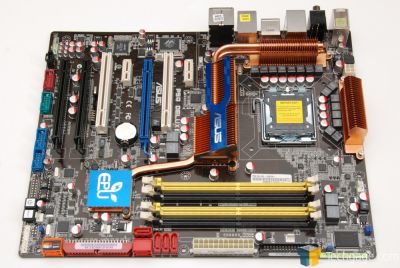
|
During a company-sponsored media event earlier this month, Gigabyte delivered a presentation in which it compared its own DES technology against EPU and also questioned the validity of some of the claims and performance figures Asustek has published. Asustek has reacted to this presentation by saying that Gigabyte does not have a full understanding of its engineering design and methods and so the accusations made were false.
Source: DigiTimes
Published on May 26, 2008ASUS P5Q Deluxe – P45 Is Off to a Great Start
Intel’s P45 is due out next month, but the boards are already rolling in. Our first look is at ASUS’ P5Q Deluxe, a DDR2 offering that’s feature-packed and comes in at a great price. Features include a layman’s RAID tool, updated Splashtop, lots of connectivity, a great layout and more.
Published on May 26, 2008Hypersonic’s Avenger AG2 Now Available
We posted a review of Hypersonic’s brand-new 12-inch notebook two weeks ago, and were impressed overall. It’s not the best-looking machine on the planet, but the pricing was right, and so was the performance (understatement). Well, the machine has now launched, and is available with many different configuration options.
Stock pricing a little bit higher than I originally anticipated, and the website itself seems a little confused as it quotes the “stock” price at two different values, but once entering the configurator, it’s at $1,359. That configuration includes a 2.1GHz T8100 Core 2 Duo, 2GB of RAM, 250GB hard drive and other usual goodies. There are two reasons the pricing is higher than expected. First is that the 1.66GHz CPU we expected didn’t make it in there, and also the default hard drive is much larger than what we thought it would be on the stock machine.
What is pretty much identical, though, is our “as-tested” machine. We were quoted the machine at around $1,599, and after we set the same options, the machine comes out at $1,598. However, that’s with 4GB of RAM and a 32-Bit OS, so it will cost an additional $20 to allow yourself to actually use all 4GB.
If you are looking for a notebook that’s comes in a smaller package but packs a wallop, check out their site and our review for all the details.
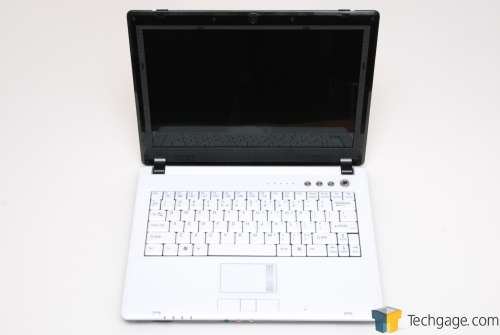
|
While other sub-notebooks, such as the Lenovo X300 or the Apple MacBook AIR build for better battery life, Hypersonic packs a powerful Penryn processor along with lots of RAM and a large hard drive. That’s the trade off, though. Better battery life or a faster machine? There’s no such thing as both unless you have a battery the size of the notebook itself.
Source: Hypersonic Avenger AG2 Review
Published on May 26, 2008Older Entries
Newer Entries
Copyright © 2005-2025 Techgage Networks - All Rights Reserved.
About Us | Advertise | Terms & Conditions | Privacy Policy




